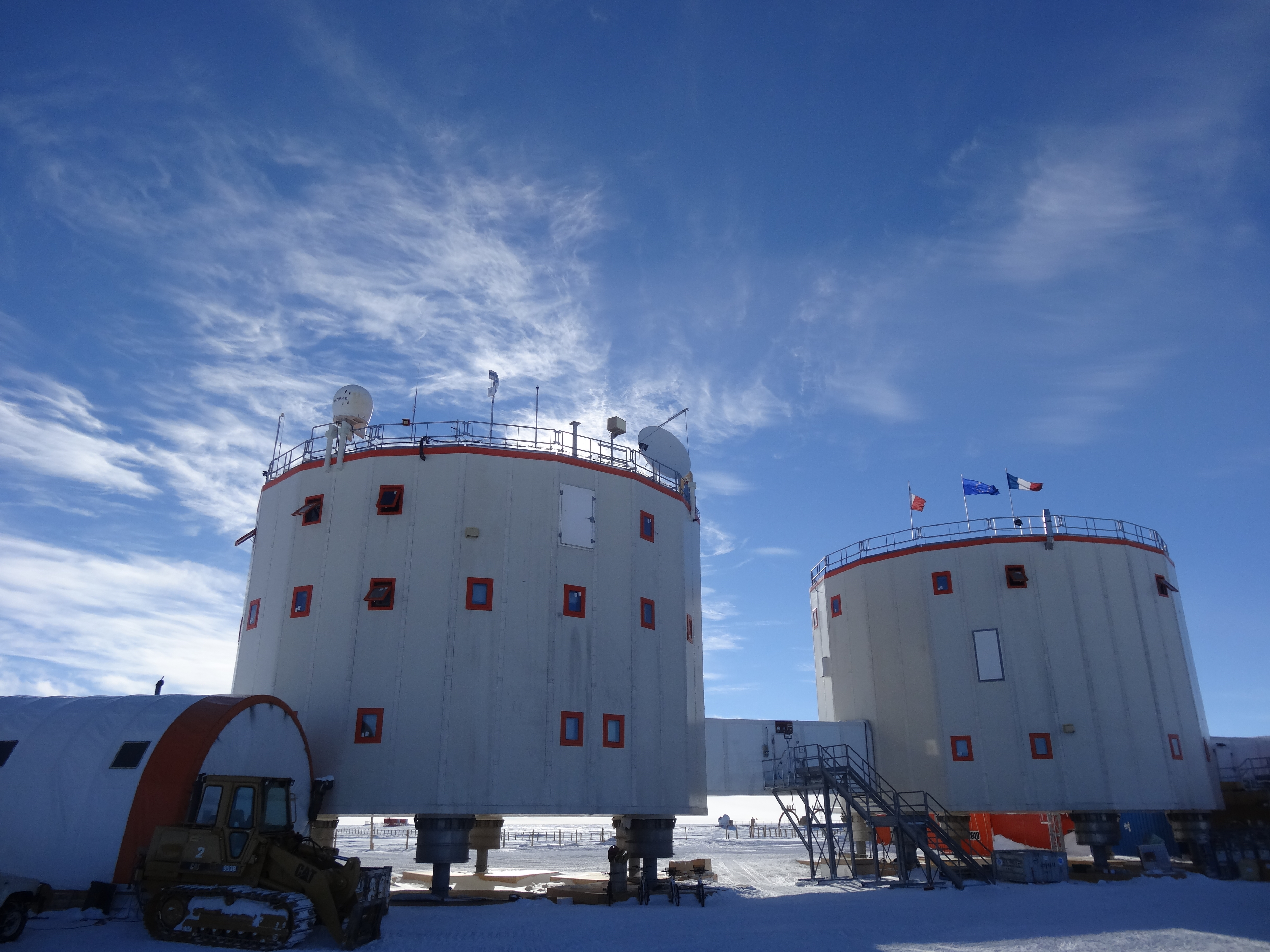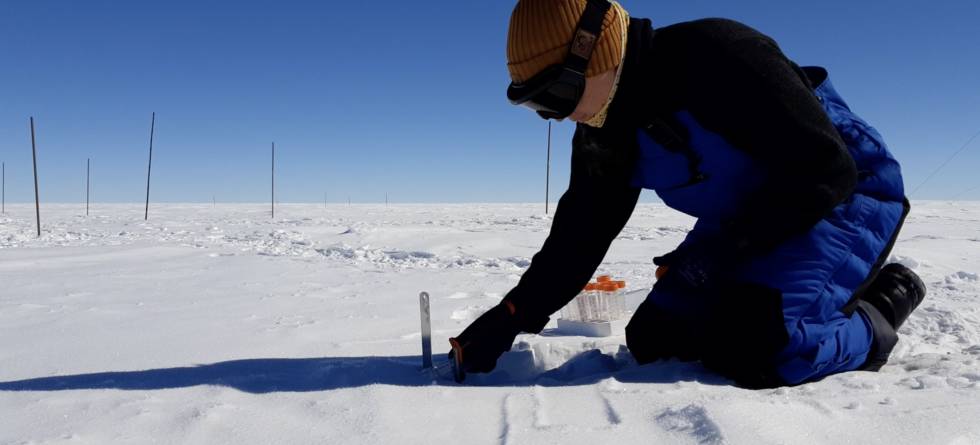Inès Ollivier spent a year in Antarctica where she tended instruments that gives us an understanding on how snow accumulates into the massive ice sheet that we know as the Antarctic. Now she is well into her first year as a PhD-student in the EU-funded DEEPICE project. In this project they studies proxies in deep ice cores to understand the past climate dynamics in Antarctica.
Ice cores are long pillars of ice drilled out of glaciers or ice sheets. The are the result of years upon years of snowfall forming ice, which means going through them from top to bottom is like going through time, counting the layers, and reading and dating the ice. Almost like tree rings, you can analyse it layer by layer.
Temperatures, CO2 and other variables cannot be read directly from the ice, but researchers can approximate based on knowledge and historical records. This indirect reading makes ice cores a socalled proxy. In the DEEPICE projects, the isotopes of water are central – heavier or lighter versions of H2O.
"Those isotopes exist naturally on Earth. When the water goes to a phase change, the different isotopes don't behave the same – for example heavier water isotopes tend to stay in the liquid phase," says Ollivier. "We don't measure the amount of rare isotypes, we measure the ratio of the most abundant ones compared to normal water."
In Antarctica, from these ratios, the researchers can measure the local temperature where the snowfall happened. As Inès explains in the podcast, however, it is still not a straight-forward process of gathering the data necessary.
Living in Antarctica

The most normal research period for Antarctica is the summer months, but Inès is one of the few that has stayed a whole year, through the dark and cold winter months as well – with three months of complete darkness, and wind chills of down to -100°C.
"It's not that bad, actually," says Inès about her year-through stay at Concordia (which, at the time of writing in early July had -31.3°C), stating the importance of sampling and working there for the whole year.
"If you only know what is happening there through the summer, you're missing a big part of the information."
Would Inès recommend living there through a whole year? Absolutely.
Inès Ollivier is a PhD-student at the Geophysical institute, UiB, and a Bjerknes Centre researcher. Learn about her work together with our host Stephen Outten from Nansen Environmental and Remote Sensing Center and co-host Ingjald Pilskog from Western Norway University of Applied Sciences.

